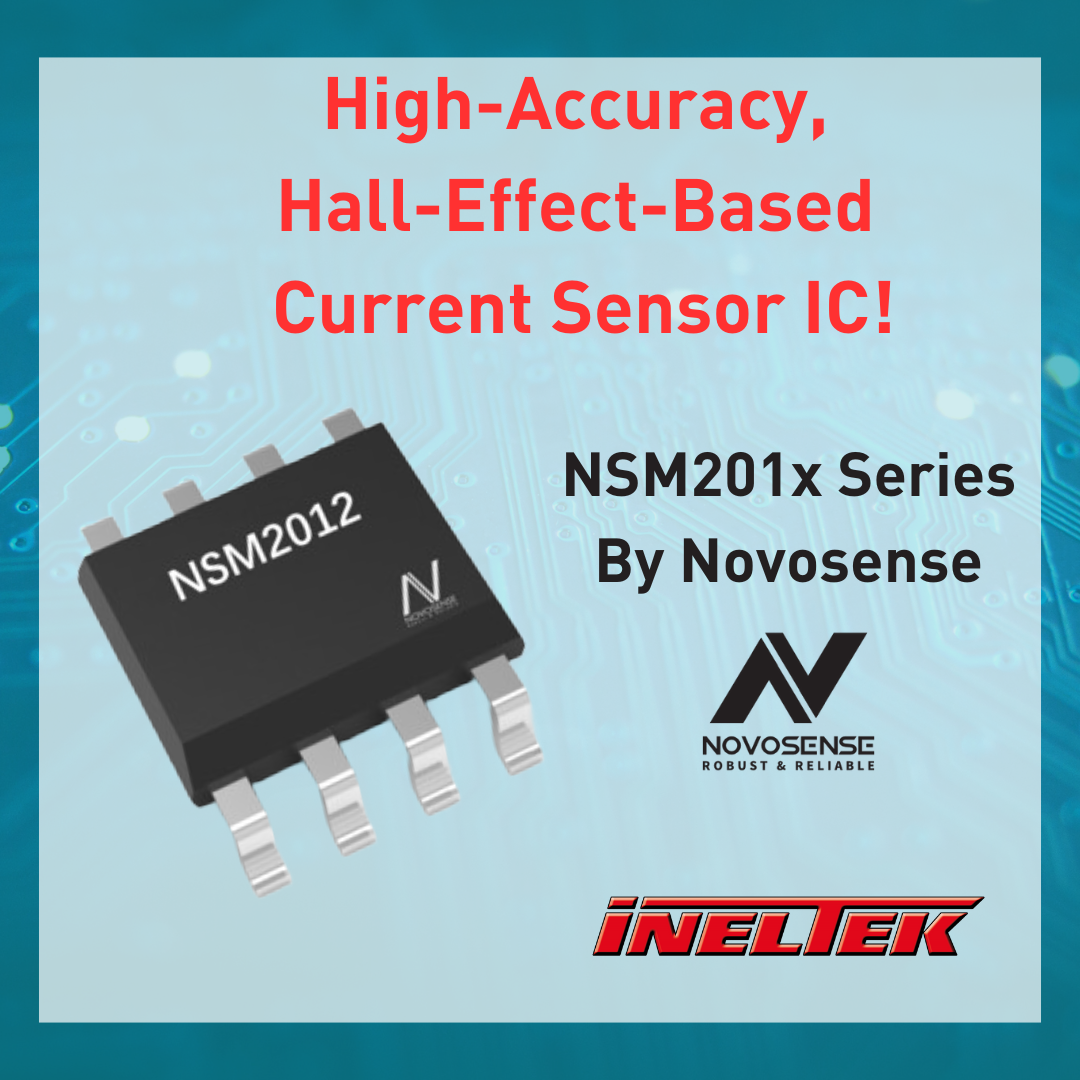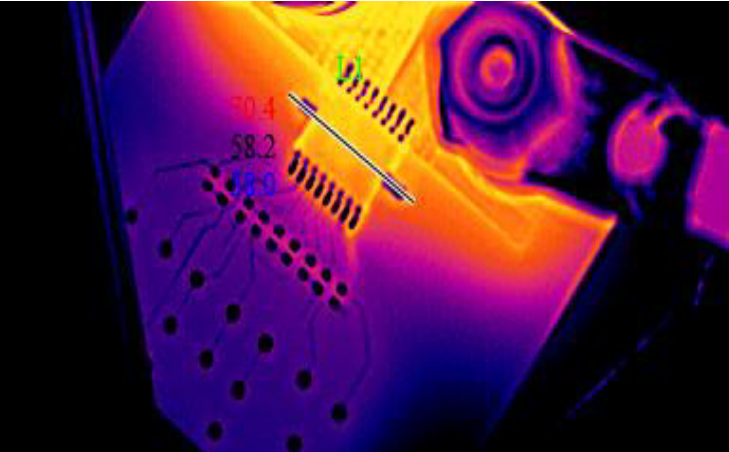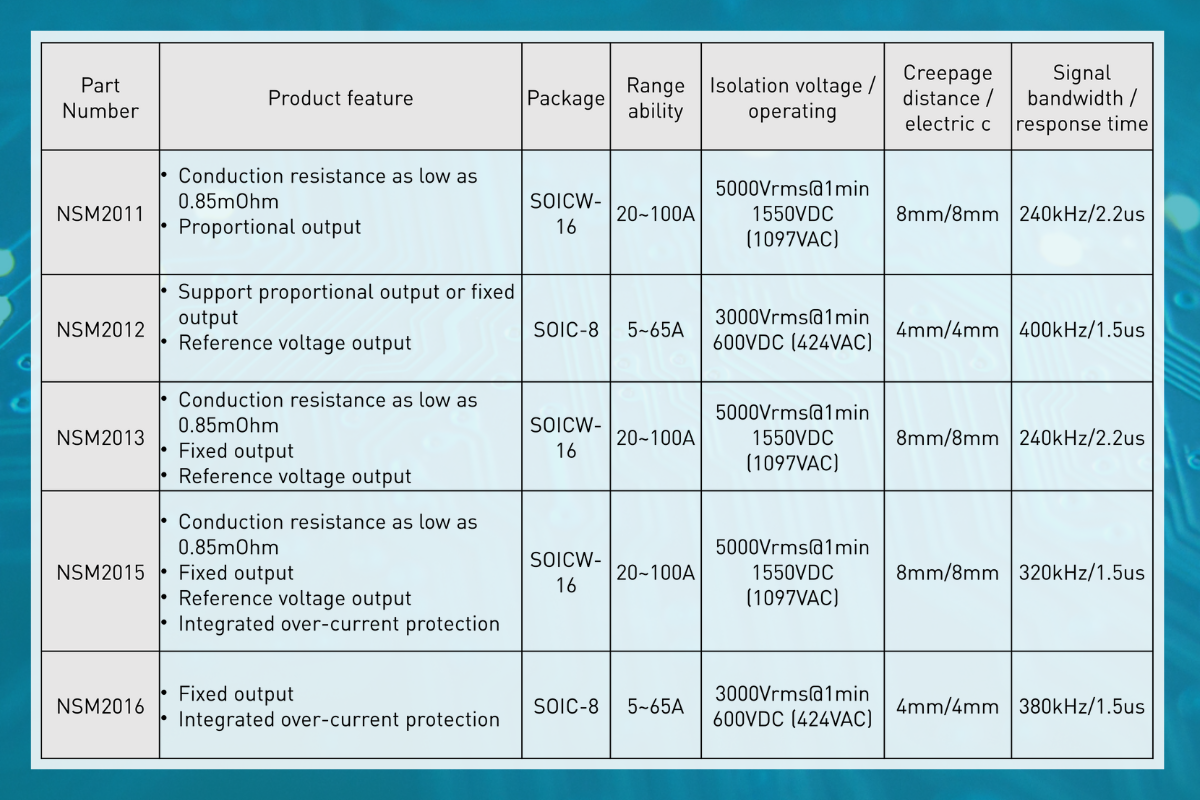
NSM201X Series of NOVOSENSE is based on the Hall effect principle, using an isolated way to convert the current within ±100A into a linear voltage output.
Measuring current, different current-sensing options can be considered. For instance, the current-sensing resistive method that utilizes a shunt resistor or current sensors based on the Hall effect. Each method has its pros and cons, depending on the application. However, the IC current sensor based on the Hall effect by Novosense offer some significant advantages that are worth considering!
The current sensing methods based on the Hall effect convert the magnetic field produced by current flow into a voltage signal. In the case of the conventional approach, a ferromagnetic core is typically used to encircle the current-carrying cable, which flows perpendicular to the sensor.
This method is suitable for measuring high currents – often over 100 A. It provides good isolation between the sensor and the current flowing through the cable. But it requires additional circuitry, such as a differential amplifier with gain control and a temperature compensation circuit to achieve an acceptable accuracy.

The NSM201X ICs from Novosense is a solution much easier to use. It is also based on the Hall effect principle and provide isolation. They have TÜV and UL62368/EN62368 safety certification. And can be used to measure up to ±100A.
In addition, the mentioned additional circuits are already embedded and it helps to minimize the common-mode magnetic field from the external environment by using an internal differential Hall pair. The Hall and conditioning amplifier circuits in the NSM201x convert the magnetic field into an output voltage that increases or decreases in proportion to the input current. Thanks to these already integrated circuits, this solution needs less space on the PCB compared to conventional Hall sensors or resistive current sensors.
Resistive current sensing appears often to be convenient due to its simple implementation. But the NSM201x series offers several advantages compared to this or other methods.
In comparison to the shunt resistor method, the NSM201x series provides high isolation withstanding voltage (up to 5kVrms according to UL62368-1 depending on the package) and lifetime stability.

When using the resistive method, thermal dissipation, and power losses in the shunt resistor can be a cause for concern. However, the NSM201X addresses this issue by minimizing heat loss on the chip. The Sensor ICs from Novosense integrate a low current path resistance: Either 0.85mΩ or 1.2mΩ, depending on the specific sensor chosen. For further details, please refer to the table below.
NSM201X series ICs are space-saving. The small IC footprint and no need for additional components offer a very small solution in comparison to the resistive sensing method, conventional hall sensors or current transformers. They can be ordered either in SOIC-8 or SOICW-16 packages.
Furthermore, compared with the current sampling method of the shunt resistor plus the needed isolated operational amplifier, the NSM201x series eliminates the need for a primary side power supply. So a much simple and convenient layout is needed.
NSM201x series guaranties out of the box a total output error within ±3 sigma statistic range depending on the derivate below ±2%. Its non-linearity error is only ±0.2% typical.
The NSM2012 provides an internal accurate temperature compensation algorithm and factory accuracy calibration. This current sensor can maintain high accuracy across the entire temperature range, eliminating the need for customers to perform additional programming or calibration. For 25°C to 125°C the total output error is only ±1.2% within the 3-sigma statistic range.
The NSM2015 has a pseudo-differential output mode.  In addition to the Vout signal a stable Vref of 2.5V is provided. This will not change within a certain supply voltage since the IC integrates an LDO already. This optimizes the bill of materials.
In addition to the Vout signal a stable Vref of 2.5V is provided. This will not change within a certain supply voltage since the IC integrates an LDO already. This optimizes the bill of materials.
The NSM2015 and the NSM2016 provide an overcurrent protection function. Using the Vref and a resistor the threshold can be adjusted. In the case of overcurrent, the dedicated fault pin (open drain) is pulled low until the current goes back below the threshold.
Automotive: OBC, DC/DC, PTC heater, charging gun, PDU, etc.
Industrial: PV inverter, industrial frequency converter, power supply (UPS, SMPS, etc.), PDU, etc.
Consumer: service robots, drones, two-wheeled vehicles, vacuum cleaners, etc.
Have you found the perfect solution for your application and would like to get more information? Or are you unsure about what to choose and would prefer to receive some advice from us? If so, please fill out the following form, and we will contact you. We are more than happy to assist you!